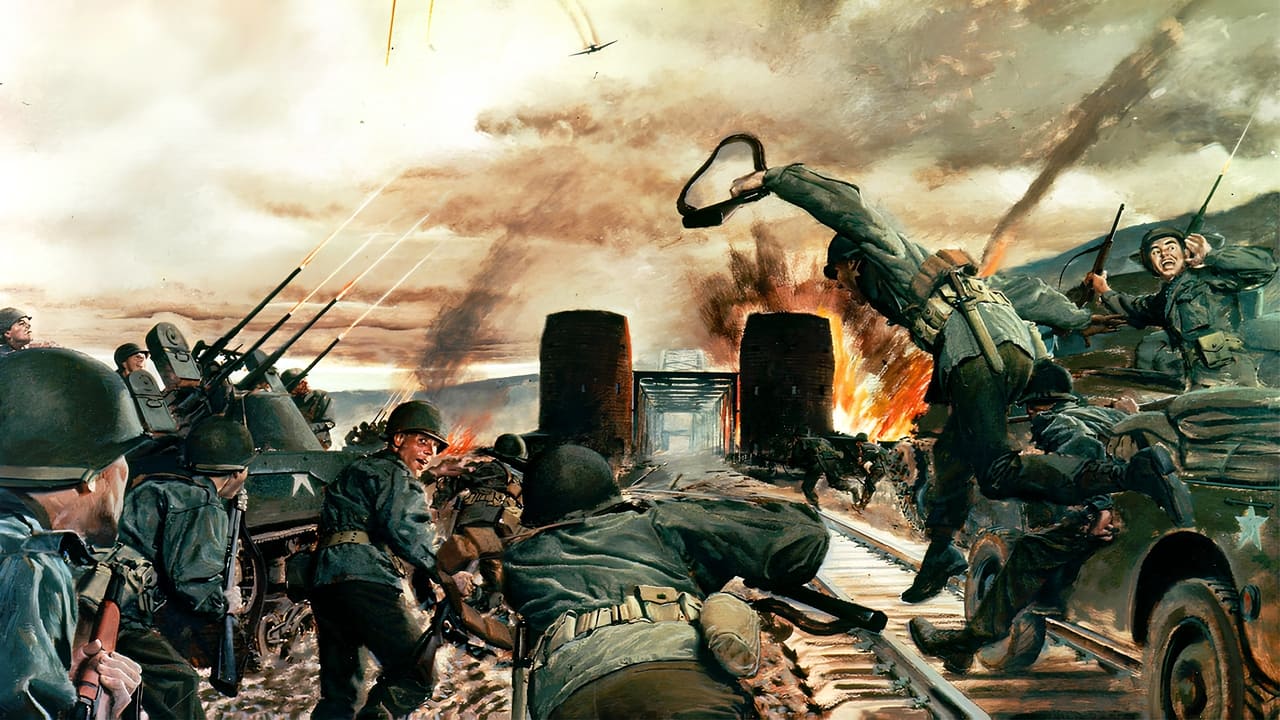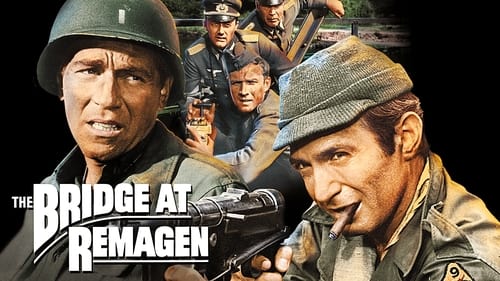



The performances transcend the film's tropes, grounding it in characters that feel more complete than this subgenre often produces.
View MoreIt really made me laugh, but for some moments I was tearing up because I could relate so much.
View MoreThe story, direction, characters, and writing/dialogue is akin to taking a tranquilizer shot to the neck, but everything else was so well done.
View MoreGreat example of an old-fashioned, pure-at-heart escapist event movie that doesn't pretend to be anything that it's not and has boat loads of fun being its own ludicrous self.
View MoreCouldn't finish re-watching this movie for this review. Time-filler for a Saturday afternoon. Uncomplicated storyline and characters. George Segal probably miscast. Role needs more gravitas, which Gazarra has in spades but he's wasted. Just badly directed. Watch an episode of "Combat" if you want more tension and better depiction of soldiers.
View More"Blue Max" director John Guillermin's military action thriller "The Bridge at Remagen," with George Segal, Robert Vaughn, and Ben Gazzara, ranks at a good World War II movie. Clearly from the attitude of the U.S. Army soldiers—not their pompous superiors—these G.I. Joes see combat as a dirty business that you can get you killed. No doubt, the disillusion that most Americans had with Vietnam had tainted the storytelling. The Richard Yates & William Roberts screenplay has U.S. Brig. Gen. Shinner (E.G. Marshall) sending soldiers from Major Barnes' command (Bradford Dillman) into "Indian country" to capture 50-thousand German soldiers. Guillermin's movie shifts back and forth between the U.S. Army—the Brits and French have nothing to do with what being blown up or shot at here—the German Army. The German General Staff wants General Von Brock (Peter van Eyck of "Shakalo") to destroy the bridge so the Americans will not have a highway into the Third Reich. Naturally, Von Brock is horrified at the cost; 75-thousand German soldiers will be trapped behind the lines. Von Brock balks at the order and now must sign it to assure that he will carry it out. Von Brock assigns the inevitable task to destroying the bridge to German Major Paul Kreuger (Robert Vaughn of "The Magnificent Seven"). Like most 1960's World War II film post-"The Young Lions," Kreuger is treated as a sympathetic character with a daunting task. Of course, history dictates that Kreuger will not be able to hold the bridge, so suspense is limited in most respects. Nevertheless, the logistics of the action scenes, a robust cast, Elmer Bernstein's atmospheric orchestral score, Stanley Cortez's crisp, wide-screen cinematography, and an anti-heroic tone make "The Bridge at Remagen" a movie worth watching. Segal's Lieutenant Phil Hartman is the kind of character that Tom Hanks might have played. Ben Gazzara's skulduggery as a souvenir collector strikes the right tone for the anti-war era during which the film was made. World War II fanatics may complain about the post-World War tanks that turn up here, too. The armored vehicles look like they are hauling butt a little too fast in the opening credits, but it creates momentum. The irony is what happens to the German Major. Although it has nowhere near the scale of "The Longest Day," "The Bridge at Remagen" is a must-see for World War II moviegoers.
View MoreIn March 1945, during the Allies' final advance into Germany, the U.S. 9th Armored Division succeeded in capturing the Ludendorff Bridge in the Rhineland town of Remagen. This was an important event because it was the only significant bridge still standing over the Rhine, and its capture meant that the U.S. Army could cross it immediately with heavy tanks, artillery pieces and supply trucks, thus establishing a bridgehead on the eastern bank of the river without the need for an amphibious crossing. "The Bridge at Remagen" tells a fictionalised version of these events. Virtually all war films made during World War II itself, and most of those made during the following decades, took a strongly patriotic approach, with the heroic Americans or British putting the villainous Axis forces to flight. There were, however, a few which took a more objective, nuanced look at the war. "Bridge on the River Kwai" and "Ice Cold in Alex" are two fine examples which come to mind, and this film is another. The three main characters on the American side are Major Barnes, Lieutenant Hartman and Sergeant Angelo, generally known as "Angel". Barnes is an aggressive, gung-ho officer, determined to capture the bridge at all costs, although he is motivated less by belief in the Allied cause than by a desire to further his own military career by impressing his superiors. Hartman, by contrast, is becoming disillusioned and weary of the war; his main motivation is to get home alive along with as many of his men as possible. He has reluctantly been promoted to company commander following the death of his more reckless predecessor. He despises Barnes whom he sees as putting his own interests before the lives of the men under his command. Angel also, at first, seems like a man who puts his own interests before all else, in his case by trying to make a profit out of anything he can steal. Early in the film we see him picking the pockets of a corpse, much to Hartman's disgust. Later on, however, Angel is humanised by his exposure to the darker side of war, especially after he is forced to shoot a German civilian who has opened fire on his unit, only to find that he has killed a teenage boy. The main character on the German side is Major Paul Krüger, the officer charged with defending the bridge. Krüger is not portrayed as a stereotypical Nazi but as an honourable Wehrmacht officer with a strong sense of duty. He is, however, confronted with two difficulties. The first is that he has been given two sets of mutually contradictory orders. The German High Command, on Hitler's instructions, has commanded that all bridges across the Rhine should be destroyed, but Krüger's immediate superior, General von Brock, has ordered him to hold the Remagen Bridge for as long as possible to enable the German 15th Army, trapped on the west bank of the river, to escape. His second difficulty is that he has been allocated insufficient troops to do the job. Unlike many war films, this is not a simple tale of the triumph of American heroism over Nazi villainy, but rather a psychological study of men at war. It features a number of very convincing performances, especially from George Segal as Hartman, Ben Gazzara as Angel and Robert Vaughn as Krüger. Hartman and Krüger may be on different sides, but both are shown as fundamentally decent, if flawed, characters. We do see evidence of German brutality and treachery, but against this must be set Barnes's callous disregard of the human cost of his actions and a scene where American planes strafe unarmed German civilians trying to flee across the bridge. It is not an anti-war film in the way in which, say, "Catch-22" or "Oh! What a Lovely War" are anti-war, but it can be seen as an anti-heroic war film, with no attempt to paint one side as wholly good or the other as wholly evil. In place of glory or heroics it shows us ordinary people, both soldiers and civilians, trying to survive the war with their lives, or their honour, intact. Director John Guillermin made some other good war films, including "I Was Monty's Double" and "The Blue Max", which also showed some of its German characters in a sympathetic light, but "The Bridge at Remagen" is the best of his which I have seen. 8/10
View MoreWhat I liked about this film was the exploration about following orders. Both the German and American commanding officers had to do the same. Both subordinate troops rankled at the orders. Both commanding officers were threatened with treason. But both remained true in the end to the real forces that led them. I think that exploration elevates the film. So too does what now we call special effects but in 1968 we see real buildings disappearing. One with a mother and child just barely making it. Too close for me. And some geese who were as brave as any of the combatants in one scene.An ancient film with great real special effects, that overshadow a difficult them.
View More